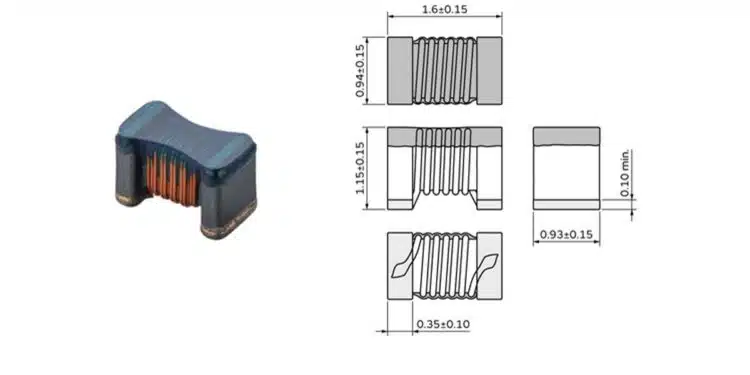Murata Manufacturing Co., Ltd. has commercialized the 0603 inch size in-vehicle PoC Power over Coax SMD inductor LQW18FT_0H series (hereinafter “this product”). Mass production began in December 2024.
With Advanced Driver Assistance Systems (ADAS) becoming more commonplace in recent years, the numbers of high-definition cameras on vehicles are also increasing.
High-speed interface PoC*2 that combine both signal and power transmissions on a single coaxial cable are being used on vehicle camera systems with LVDS*1 transmission. In a PoC circuit, a circuit processor handles broadband signals, and usually multiple inductors are used for a wider bandwidth to maintain the high impedance required to separate the signal and the power.
In response, Murata applied our proprietary ceramic materials and product structures to achieve a SMD chip inductor with the same high impedance as that of conventional 0805 inch size products in 0603 inch size. This enables exchanges to 0603 inch sizes to be performed, contributing to component size and weight reduction through implementation space reduction.
Going forward, Murata will strive to develop products to meet market needs and contribute to the shift to high-performance and high-functionality automobiles.
Specifications
Product name | LQW18FT_0H series |
|---|---|
| Size (mm) | 1.6 x 0.94 x 1.15 |
| Inductance range | 0.55 to 2.2 μH |
| Operating temperature range | -40 to 125℃ |
| Other | AEC-Q200*3 compliant |
- *1LVDS (Low Voltage Differential Signal): The most general technical standard for the transmission of differential data.
- *2PoC (Power Over Coax): A method that combines the signal line and power line to a single coaxial cable.
- *3AEC-Q200: One of the standards defined by the AEC (Automotive Electronics Council).






























